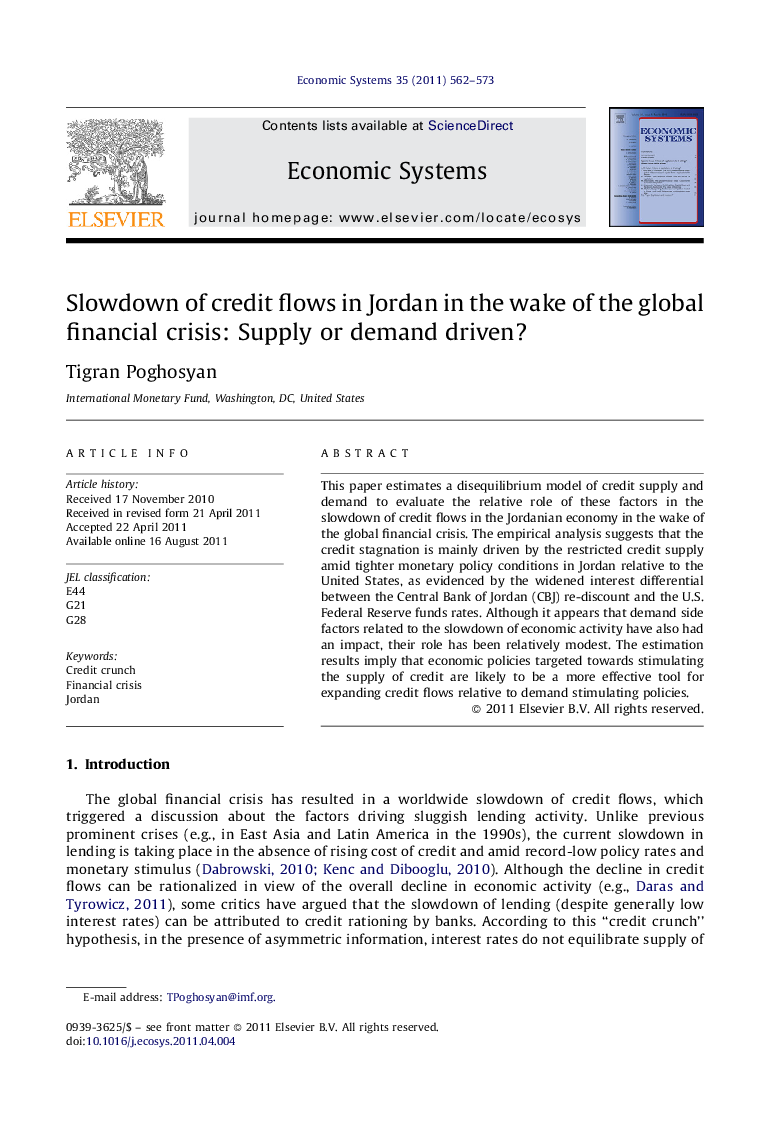| Article ID | Journal | Published Year | Pages | File Type |
|---|---|---|---|---|
| 5056570 | Economic Systems | 2011 | 12 Pages |
This paper estimates a disequilibrium model of credit supply and demand to evaluate the relative role of these factors in the slowdown of credit flows in the Jordanian economy in the wake of the global financial crisis. The empirical analysis suggests that the credit stagnation is mainly driven by the restricted credit supply amid tighter monetary policy conditions in Jordan relative to the United States, as evidenced by the widened interest differential between the Central Bank of Jordan (CBJ) re-discount and the U.S. Federal Reserve funds rates. Although it appears that demand side factors related to the slowdown of economic activity have also had an impact, their role has been relatively modest. The estimation results imply that economic policies targeted towards stimulating the supply of credit are likely to be a more effective tool for expanding credit flows relative to demand stimulating policies.
⺠The results support the “credit crunch” hypothesis in Jordan, suggesting that recent credit stagnation has been largely driven by supply factors. ⺠Policies aimed at expanding supply of credit are key for accelerating lending activity in Jordan in the wake of the global financial crisis. ⺠The monetary easing that occurred between November 2008 and February 2010 narrowed the gap between policy rates in Jordan and the United States and assisted in expanding the supply of bank credit.
